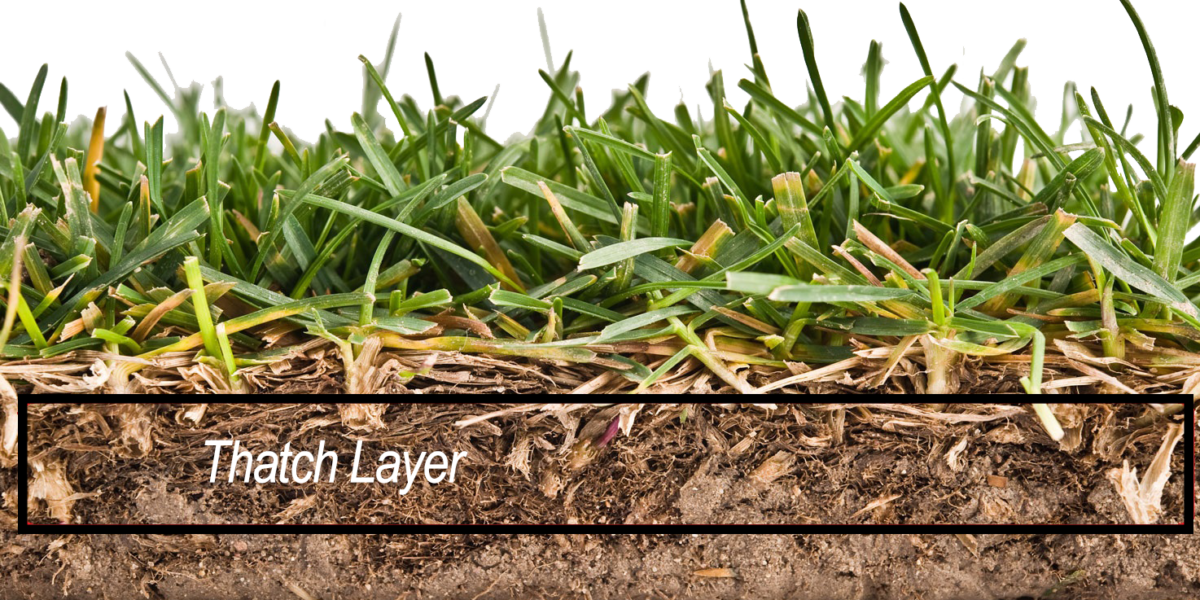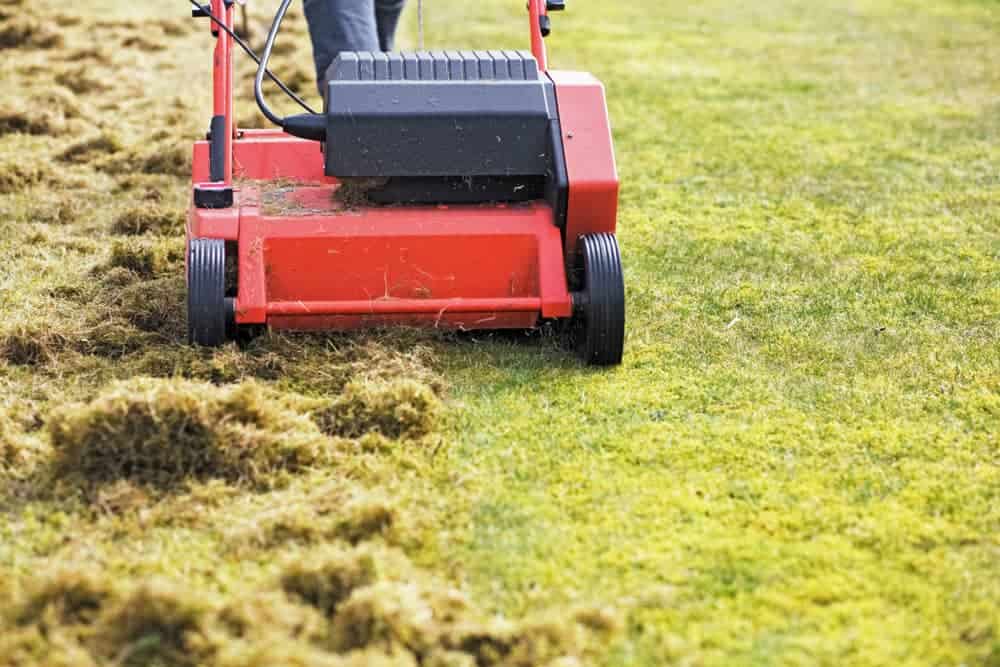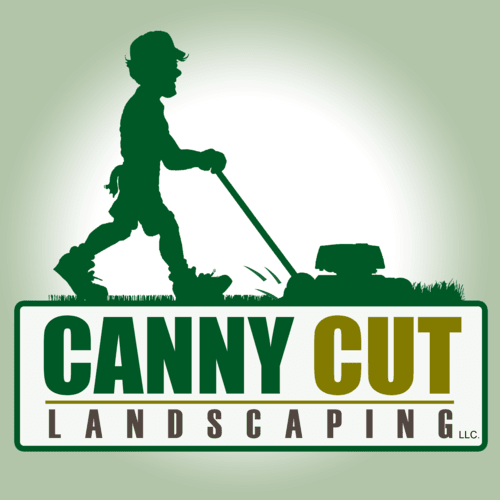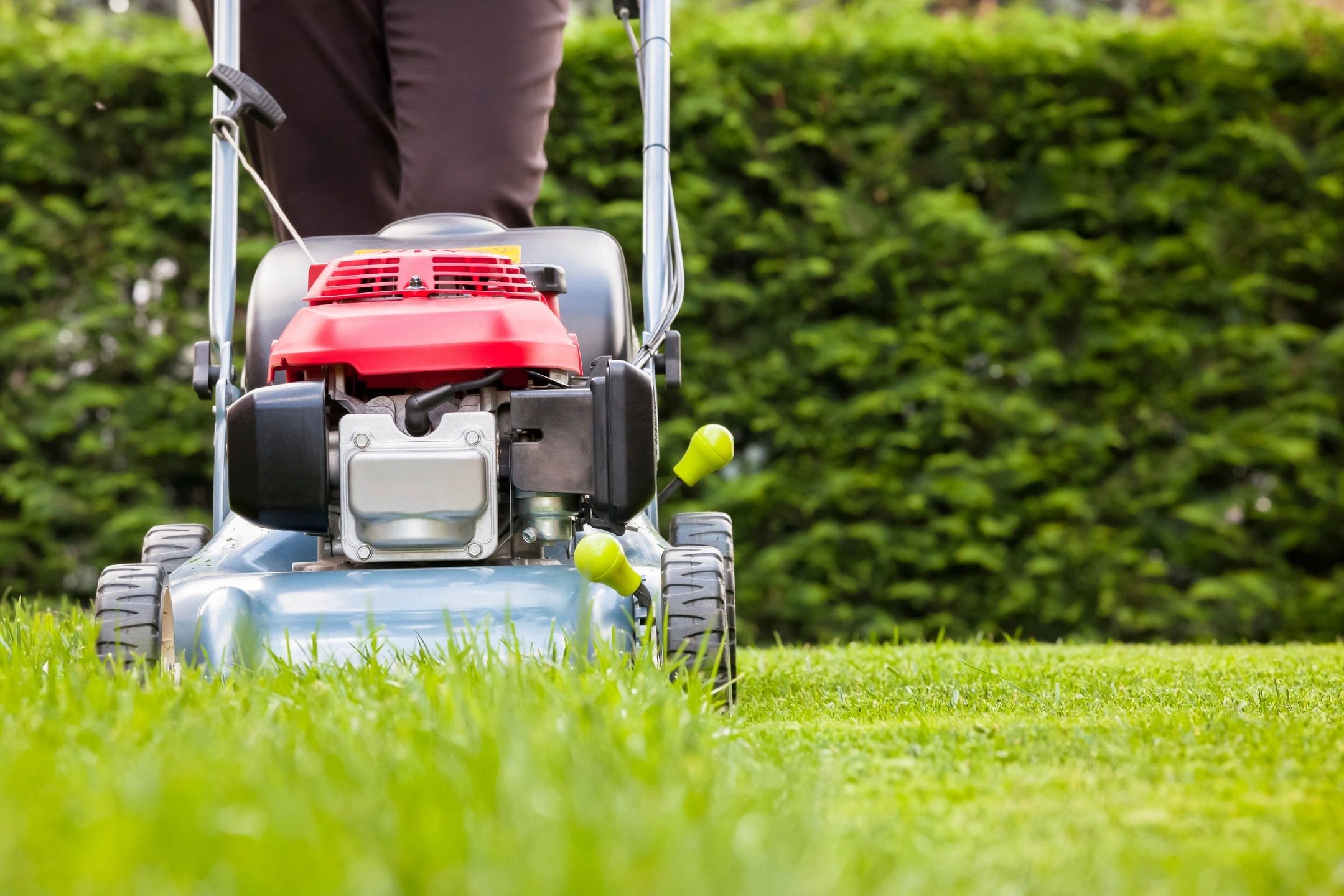Imagine stepping onto your lawn and feeling as though you’ve wandered into a lush, verdant paradise. Now, imagine that same space looking tired, the grass struggling beneath an unseen oppressor. This hidden foe? Thatch. Yes, that dense layer of dead turfgrass tissue lying between the green vegetation of your lawn and the soil surface below is not as innocent as it sounds. It’s like having a tight sweater on in summer – uncomfortable for your lawn and stifling its growth.
But wait! Before visions of pitchforks and Herculean efforts to save your besieged backyard dance through your head, let me tell you: understanding thatch is half the battle won. Georgia’s climate can be both a blessing and curse in this saga; warmth encourages growth but also invites unwelcome layers to form quicker than one might expect.
A yard with just the right amount of thatch basks in glory – it’s resilient against wear while boasting improved water retention. Too much though? That’s where nightmares begin—waterlogged roots and suffocated grass can quickly turn a lush green paradise into a patchy, brown mess. Ensuring your lawn stays lush and lively hinges on finding that sweet spot between too much and too little care.
If you are looking for lawn care or landscaping in the Atlanta Metro area give us a call.
Understanding Thatch and Its Impact on Your Lawn
- Understanding Thatch and Its Impact on Your Lawn
- The Right Time for Dethatching Your Lawn
- How to Measure and Diagnose Thatch Problems
- Selecting the Right Dethatching Method
- Preparing Your Lawn for Dethatching
- FAQs in Relation to How to Dethatch a Lawn
- Conclusion
Understanding Thatch and Its Impact on Your Lawn
Diving into the world of lawn care, there’s one term that might make or break your lush green dreams: thatch. So, we’re gonna peel back the layers on thatch, exploring its composition and its critical influence on the vitality of your lawn.

credit lincolnlandscapinginc.com
What Is Thatch?
Imagine a layer tucked between the vibrant green blades above and the soil beneath. That’s your thatch. Composed of dead grass, organic matter, and other lawn debris, this layer isn’t inherently evil. In fact, when in balance, it protects roots from extreme temperatures and retains moisture.
But, not all is rosy in the land of thatch. When accumulation goes unchecked due to imbalanced lawn-care practices—think insufficient mowing or over-fertilizing—it becomes more foe than friend.
The Negative Effects of Excessive Thatch
- Hinders Nutrient Flow: A thick blanket of thatch can block water, nutrients, and air from reaching grass roots effectively. This stunts growth leaving you with less-than-ideal turf quality.
- Promotes Disease: Too much cover gives disease-causing fungi a cozy spot to thrive undisturbed by treatments meant to keep them at bay. This means more sickly-looking patches instead of uniform greenery.
- Lawn Debris Buildup: Dead leaves and stems accumulate faster than they decompose, leading to buildup. This makes for an unsightly mat choking out new life below as well as inviting pests for unwelcome stays.
This delicate balancing act means keeping an eye out for signs like sponginess underfoot or visible brown layers amidst greens; these could be cries for help from underneath.
In essence? While some thatch is beneficial, letting it run wild without checks can turn your dreamy backyard oasis into a nightmare scenario quicker than you’d think. So yes – understanding and managing this sneaky interloper should definitely top your list if lush lawns are what you’re after.
The Right Time for Dethatching Your Lawn
Figuring out the perfect time to dethatch your lawn can feel like solving a puzzle. But, get it right, and you’re on track for a lush, healthy yard. Deciphering the optimal moment to embark on this chore varies with each variety of grass, making it a nuanced decision.
Best Seasons for Warm-Season Grasses
If your lawn sports warm-season grasses like Bermuda or Zoysia, late spring through early summer is your window. Why? Because these grasses hit their growth spurt as temperatures rise. Dethatching in this period lets them recover quickly and thrive.
- Late Spring: Start eyeing your lawn’s condition as winter fades. If you spot thatch buildup, plan ahead.
- Early Summer: This is prime time if you missed late spring. The warmth encourages rapid recovery post-dethatch.
A guide from an extension service recommends using this season to give warm-season lawns the care they need without stressing them out further.
Timing for Cool-Season Grasses
Cool-season varieties like Kentucky Bluegrass or Tall Fescue prefer a touch of chill in the air. Aim for early fall or even late summer but never during peak heat waves which can stress cool-season lawns unnecessarily.
- Late Summer: This allows enough time before dormancy sets in colder regions.
- Fall: An ideal fallback if summers are too harsh where you live; just make sure not too close to winter.
How to Measure and Diagnose Thatch Problems
Got a lawn that feels more like a sponge than turf? Perhaps it’s the moment to play detective in your backyard. Embarking on a journey to identify, gauge, and tackle thatch dilemmas can prevent your lush oasis from morphing into a dreadful scene.
What Is Thatch?
First off, what are we dealing with here? Thatch is basically your lawn throwing all its leftovers between the grass blades and soil surface. We’re talking dead grass, roots, stems—the works. A little bit of it is okay; it’s when it starts building up too much that problems kick in.
The Feel Test: Does Your Lawn Feel Spongy?
If stepping on your lawn feels like stepping on a sponge cake (delicious but alarming), you’ve got yourself a sign of excessive thatch. But don’t just trust your feet. Time to get down and dirty.
Gathering Your Tools:
- A sharp knife or soil probe
- A ruler or any straight edge
- Your hands (yep, those will come in handy)
The Digging Method:
- Dig In: Carve out a small section of turf about two inches deep. Make sure you’ve got both grass and underlying soil in there.
- Analyze: Take a look at the cross-section of your slice. You’ll see layers—green on top (grass), then possibly brownish layer beneath—that’s our suspect: thatch.
This method lets you actually see how thick the thatch layer has become without needing fancy equipment—a finger’s depth should give you an idea if action needs to be taken. If finding this organic debris pile-up taller than half an inch—it’s showtime for some dethatching.
Finger-Press Technique:
No tools around? No problem. Simply press down with fingers onto various spots across your lawn. Feeling resistance before hitting solid ground? That’s likely excess build-up blocking the way—another red flag waving at us saying “It’s time.”
Check out this detailed guide from Iowa State University Extension Service, which dives deeper into why managing thatch is crucial for healthy lawns.
Remember folks: Knowing what lies beneath can save tons of headache later. So, always do your homework before diving into any project. This approach will not only spare you from future troubles but also streamline the whole process.
Selecting the Right Dethatching Method
Got a thatch problem? Let’s fix it. But first, you need to pick your weapon of choice: manual or power rake. Here’s how to tell which one will work best for your lawn.

credit lawn.com.au
Manual vs. Power Rakes
Size Matters:
- If you have a small yard, a manual rake might just do the trick. It’s like choosing between hand-washing dishes or using a dishwasher for three plates.
- For larger lawns, you’ll want to save your back and time with a power rake. Think of it as upgrading from scissors to a lawn mower for cutting grass – it’s way faster and requires less grunt work.
Type of Grass:
- Different grass types can withstand different levels of intensity when it comes to dethatching. For instance, Kentucky bluegrass and tall fescue are pretty tough customers but always check before going full throttle with any tool.
- A light touch is often enough if all you’ve got is some light thatch making your lawn feel spongy underfoot. But when things look more like an organic matter party gone wild, bring out the big guns (a.k.a., power rakes).
The Tools Explained:
- A manual rake is basically what it sounds like – good old elbow grease powered by you. The tines scrape away thatch so air, water, and nutrients can reach those eager-to-grow roots again.
- Power rakes, on the other hand, are motorized beasts designed to tackle larger areas fast. They dig in deeper than manual ones, often adjustable so they don’t harm healthy parts of your turf while evicting unwanted guests (thatch). Some even come equipped with settings tailored for specific grass types.
Preparing Your Lawn for Dethatching
Before you dive into the world of dethatching, there’s a bit of groundwork to lay. Literally. Let’s make sure your lawn is as ready as you are and prevent any oops moments that could harm it.
Step 1: Know Thy Soil
Soil compaction, our first nemesis. Attempting to cultivate plants on such compacted ground is akin to expecting grass to thrive atop a slab of concrete. Not happening, right? Before even thinking about dethatching, let’s loosen things up a bit.
- A soil test isn’t just good practice; it’s essential detective work in the garden realm. This will tell you what your soil needs before we bring out the big guns.
- If compacted soil is part of your problem, aerating might be necessary pre-dethatch fun time.
Step 2: The Thirst Quenchers – Watering Right.
You wouldn’t run a marathon without hydrating first (I hope), so why expect your lawn to go through dethatching dry? Give it some love with proper watering two days before D-day (D for Dethatch). Just enough to moisten the soil but not turn your yard into mud wrestling championship grounds.
Step 3: Mowing Down to Size
Mow down your worries—and also mow down that grass—a notch shorter than usual before tackling thatch buildup head-on. Shorter blades mean easier access for whatever tools you’re using and less stress on those grass roots afterward when they start breathing again.
The Small Stuff Matters Too:
- Rake away loose debris: Use a light leaf rake or even just an old broom—anything—to clear leaves and twigs off the battlefield… I mean lawn.
- Pick out bigger obstacles manually: You know – toys left outside by kids or pets can get in way too. Remove small items scattered across the turf so nothing hinders our mission here.
Tackling Thatch Requires Timing…and Patience:
Do all this prep at least a couple days ahead—not only does this give time if something goes awry, but certain steps like watering need their own sweet moment under spotlight.
As much as we want instant gratification from seeing results immediately after working hard, remember one thing about lawns: they teach us patience while rewarding us abundantly over seasons.
Remember folks – preparing properly means fewer do-overs later. So, let’s get it right the first time around.
FAQs in Relation to How to Dethatch a Lawn
What is the easiest way to dethatch your lawn?
Use a power rake for big yards or a manual thatching rake for small patches. Either way, it’s all about the right tool.
What is the best month to dethatch your lawn?
Late spring for warm-season grasses, early fall for cool-season types. Timing matters for recovery and growth.
How do I know if my lawn needs dethatching?
If it feels spongy underfoot or you spot more than half an inch of dead stuff on top, it’s time.
Should I cut the grass before dethatching?
Mow shorter than usual but don’t scalp it. Shorter grass lets you get down to business without extra hassle.
Conclusion
We’ve navigated the complex maze of thatch, unveiling its mysteries and revealing how it influences our gardens. It turns out, this villain isn’t always the bad guy; when balanced just right, it’s more of a misunderstood hero – protecting your green oasis rather than plotting its demise.
The journey from an unruly lawn to a verdant paradise isn’t about epic battles with nature but understanding and working alongside it. The heat of Georgia necessitates our constant attention, but in return, it blesses us with abundant flourishing. Remember, timing is everything – dethatching at just the right moment lets your lawn breathe and thrive.
Armed now with knowledge about what thatch is (and how much is too much), you’re ready to take action. Whether wielding a manual rake or powering up a dethatcher, you’re not just maintaining grass; you’re nurturing an ecosystem beneath your feet.
We didn’t just scratch the surface today—we dug deep into soil secrets because every blade of grass matters in crafting landscapes where memories are made. Let’s look back and feel proud: we’ve turned myths inside out and shown that proper care creates realms of resilience right outside our doors.


